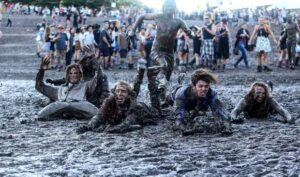I have learnt a great deal over the past fortnight about this infernal virus.
This whole incident started after we had driven from Sydney for a dinner in Broken Hill. On our way home we intended to stay with my wife’s mother, who at 96 still lives at home in Albury. As I reported in my blog two weeks ago, we all contracted COVID and we all took anti-viral drugs, despite some difficulty in accessing them. In all cases, the disease was mild, although mine has lingered with a post-viral cough.

On reflection, given how successful the antiviral treatment seemed to be especially with my 96 year old mother-in-law, I wonder why there appear to be limitations on access to these drugs.
For instance, President Biden, who is 79, received the antiviral drug, Paxlovid. In clinical trials, Paxlovid is said to reduce the risk of severe illness by 90 per cent. He has experienced a mild infection that he attributes to vaccination.
By contrast, when Trump contracted COVID in 202I, eight drugs, from aspirin to the antiviral Remdesivir, were given to Trump in what observers at the time called a “kitchen-sink” approach. Most of those drugs were probably ineffective. Trump’s infection was certainly not mild. He was lucky. Biden’s outcome is predictable, uneventful recovery. One problem is that Biden seems to have undervalued the effect of the antivirals.
When the two cases are compared there is no comment about whether there should be any restrictions on access.
Thus, why can’t the whole Australian community have access? Or is it the same case as it was with the vaccine availability, incompetent supply chain decisions covered up by a military uniform? Not enough being ordered by government is a familiar refrain. Is it another Department of Health stuff-up? Open government, Minister Butler.
We certainly had difficulty in obtaining the drug in Albury, where there were limited supplies. But this appears to be a common problem, even in capital cities. In the discussions, there seems to be a surprising degree of passivity in the community about the restriction in access without any objective clinical explanation, although that may reflect actual knowledge in the community of the existence of antiviral drugs.
Now, seeing both how our whole family benefited and how his doctors did not muck about with President Biden, who was immediately prescribed anti-viral drugs, why the restrictions on usage? On form, incompetence by the bureaucracy would appear to be the number one reason. But maybe I am too bleak. So please, what the hell is going on?
The second comment was that when the whole family has the virus, and you are away from home, how do you actually get the anti-viral drugs. You need a doctor’s prescription, and because of the current conditions for that prescription, you need to get your own doctor to prescribe. In both our cases, the practice was contacted, the doctor was busy but rang back and sent the prescription immediately by email or text. The difficulty then is getting the prescription not only filled but in our case, to also locate a pharmacy that had the drugs.
Nevertheless, the key response was that of our doctors – suburban Sydney and Albury. They promptly rang back. I have heard of the contrary situation occurring. In this case, the general practitioner did not return the call, not that day, not the next, when the prescription of an antiviral drug was essential. How often does that occur – a general practitioner forgetting the Hippocratic Oath? And nothing is done about it. How many people have died because the doctor did not ring back? One is enough!
On the Cheapside
It was a slow Saturday afternoon, and my wife was looking over a series of ship manifests seeking information about some of her relatives’ arrival in South Australia. She came across a series of ship manifests including one from the 621 ton barque Cheapside which left Plymouth Hoe on sixth July 1849 and berthed at Port Adelaide three months later on the tenth October 1849. The Cheapside was the nineteenth emigrant ship from England to arrive in the South Australian colony in 1849; it was reported in the three months voyage six babies were born and ten persons died.
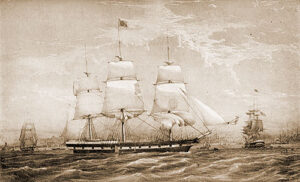
On board was my grandfather John Egan, then aged five years, together with his younger brother Michael, then three and sister Mary aged one. My great grandparents were Michael and Bridget, specified as such on the manifest. Michael is described as a labourer originally from Co Clare. Bridget – nothing added – just the spouse of Michael. I knew she had been born Bridget Corcoran in Cappoquin in Co Waterford.
Strangely, I remember once standing on Plymouth Hoe and looking out to sea and trying to feel what it must have been like sailing from these shores, knowing that you would never to see them again. But then again, they had already trekked across Ireland to Plymouth. Their embarkation had been from Plymouth not from Ireland, where Queenstown (now Cobh) in Cork was the common embarkation point for emigrants. But to America not Australia!
The Egan family was numbered among the 242 emigrants in steerage. To give a flavour to the “passengers” on the other hand there were a Mr. Clisby and his daughter, Mr. Farmer, Mr, Hodgkin, Revd. Mr. Wood, his wife and five children and Mr. J. Ayre, late surgeon-superintendent of the Tasman are described as being “in the cabin”, 12 in all.
As has been described, for the “emigrants”, they were lodged below the main deck in steerage quarters converted from cargo spaces. This area would have been dark, crowded and close to the water line – when seas were rough passengers were often shut in with poor ventilation.
Added to this were probably the captain and 20 crew; so life was crowded.
On disembarkation, the Egans made their way to Kapunda, where the first commercial mine had been opened in 1842. It’s copper ore was some of the highest quality.
The township of Kapunda lies 80 kilometres north-east of Adelaide, just beyond the furthest reaches of the Barossa Valley, where a landscape of grassland and peppermint scrub here is gently undulating. That was the scene that confronted Michael Egan and his family – wife and two children – when they alighted from the bullock dray. It was early summer.
Michael had been attracted to Kapunda because he knew there were Claremen working in this newly-opened open cut mine.
Michael had always been restless. He had worked as a steward on an estate in Clare owned by the Blood family. He was still in his twenties when he left Clare and obtained work near Ross in Co Wexford, but 20 miles from Co Waterford. Here he met Bridget who was the daughter of a local farmer from Cappoquin, who had been forced into service.
They had married in the years before potato blight took hold and devastated the potato harvest across Ireland. Potatoes were an essential nutrient. As a result, the famine devastated Ireland, the first wave commencing in 1845 and by 1849 those who survived were fleeing The Emerald Isle.
And in the South Australian heat, here he was with his wife and children in November 1849.
But this was a mining community, unfamiliar territory where extraction and smelting of the ore was a task Michael had never encountered. He was rubbing shoulders with seasoned Cornish miners.
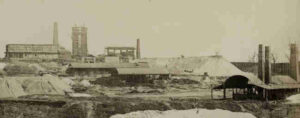
Yes, I have been to Kapunda and walked the perimeter of the overgrown mine which has been fenced off. Strewn around the site there remains clear evidence that this was once a copper mine. The tell-tale pale green cupric ore with tawny iron stains abound in the rock fragments. I souvenir a few pieces and turn away and go back to the car. The first chapter of Michael and Bridget Egan’s Adventures had begun.
For Michael was 35 at the time; he was to die 53 years later, a distinguished and wealthy Melburnian.
Taking a Taxi to Bethlehem
This is a story about my good friend, Chris Brook, who died suddenly in May. Chris was a complex person, where many facets of his personality flashed, often the light from one cancelling the other out. Yet nestling under the carapace of arch comments and disdain was a compassionate person.
He and I had gone to Jerusalem in 1995 to attend a conference where Chris was then the President-elect of the International Society of Quality Assurance (ISQua). The Conference organiser was a courtly Israeli, a long term member of the Society executive going back to when I had been President of the same institution six years before. He said very little, but I found out that he had been a veteran of the 1948 war. The veterans of this War split in two Israeli factions – Likud and Labour.
Yitzhak Rabin had been a brilliant soldier and strategist, and even though he was a hard man, he was a reasonable man. A member of the Labour Party, in 1995 he was in his second term as Prime Minister. Just over a year before he had negotiated the Oslo accords with Yasser Arafat, which introduced a period of comparative tranquility into the relationship between Israel and Palestine. For this he and Arafat had jointly received the Nobel Peace Prize in 1994.
We were lucky to go to Jerusalem during this period of peace. One morning, Chris and a colleague, Heather Buchan, decided to go with me to Bethlehem. It was a ten minute drive by taxi; negotiating the border was quick, unlike the time it had taken to enter Israel, being quizzed endlessly by unsmiling Junior Mossadista.
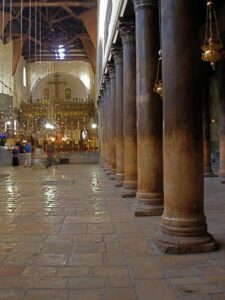
Bethlehem by and large is a nondescript town of little shade and rows of ugly yellow stucco buildings. Yet the taxi was weaving its way unerringly to the Church of the Nativity said to have been situated on the site of Christ’s birthplace. There is a photograph of us all in the Manger Square in front of the Church. On the edge of the photograph of us was a smiling lean young Palestinian, a rifle slung over his shoulder.
Like many Palestinians living in Bethlehem he was a Christian, but unbeknown to me at the time Chris struck up a conversation with him. Chris said very little about him, but after we returned home Chris corresponded with him, and whether he sent money or whether he was prepared to help him migrate to Australia I am not sure. They continued to correspond. Then one day, he mentioned to me he had not heard from this young man. The silence persisted; Chris tried to find out what had happened. As far as he knew the young man had been killed in some street altercation with Israeli troops; but where, when or how, Chris never disclosed that information. Although he must have been affected, Chris never showed grief.

We had gone to Jerusalem when a calmness prevailed. We were freely able to visit Jewish, Christian and Muslim shrines. I particularly remember walking along the Wailing Wall amid the black robes and nodding heads. There was a cave at the end of the wall, where many of these Orthodox Jews were clustered. I had entered it, even though I was obviously a tourist. Nobody seemed to mind. One of these Orthodox Jews I clearly remember was one who lifted his beard to reveal a tracheostomy hole. It did not stop him launching into a crazy tirade. I listened to the invective – vicious invective primarily directed at Yitzhak Rabin for what he had done. I excused myself. When I walked out into the sun I felt I needed a shower.
Four months later, Rabin was assassinated by a right wing extremist, Yigal Amir, on 4 November 1995 in the Kings of Israel Square.
The Accidental Nobel Laureate
Due to their recent discovery and relative inertness, there have not been many clear establishments for the applications of fullerenes. However, there are predicted applications that are presently being tested – May 22, 2022
Dr Robert Curl died last week. Dr Curl shared the 1996 Nobel Prize in Chemistry.
As recalled in his obituary in the NYT, in 1985, Dr Curl, a Texan, along with Richard E. Smalley, a Rice colleague, and Harold W. Kroto, a scientist visiting from the University of Sussex in England, showed a new configuration: 60 carbon atoms bonded into a molecule that resembled a soccer ball. They also found a larger version made of 70 carbons.
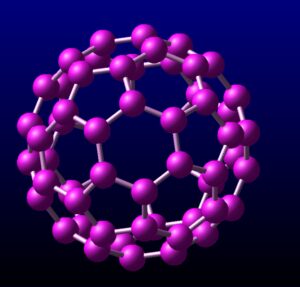
The finding was serendipitous because the scientists had been looking for something else. The chemists named the molecules buckminsterfullerenes after the architect Buckminster Fuller and his geodesic domes. The name was later shortened to fullerenes or buckyballs.
What a great name to enliven an esoteric area – the concept of kicking buckyballs around the molecular framework. The problem is that no matter how enticing the name and how cute the carbon atomic configuration; they were unable to find a commercial use.
In his Nobel Prize acceptance speech in Oslo in 1996, Dr Curl said inter alia
At the outset, none of us had ever imagined these carbon cage molecules. When we looked at carbon, the single astounding carbon sixty peak in the mass spectrum and the circumstances under which it came to prominence admitted no other explanation than the totally symmetric spherical structure, and suddenly a door opened into a new world.
The fullerenes have caused chemists to realize the amazing variety of structures elemental carbon can form from the well-known three-dimensional network that is diamond and the equally well-known flat sheets of hexagonal rings that are graphite to the newer discoveries of the three-dimensional cages that are fullerenes. We have learned that the cages can be extended into perfect nanoscale tubules which offer the promise of electrically conducting cables many times stronger than steel. Or the cages can nestle one inside the other like Russian dolls. Now that we have become more aware of the marvellous flexibility of carbon as a building block chemists may ultimately learn how to place five- and seven-membered rings precisely into a network of hexagonal rings so as to create nano structures of ordered three-dimensional complexity like the interconnecting girders in a steel-frame building.
The statement at the head of the blog was published in March this year.
Ergo, a Nobel Prize awarded for a discovery they were not looking for with a cute name but still in search of a function in the nanoworld of the molecules, let alone the ongoing search for their commercial application.
No Place for the Shamus?
I receive a great amount of stuff from the Lincoln Project, an extreme group of former republicans dedicated to destroying Trump and his acolytes. I receive regular communication because I purchased a print from them of a portrait of Abraham Lincoln with a tear in his eye. It is a powerful image. Those behind the Project are no saints; they are men who have been at the heart of the US government, insiders well versed in the “dirty trick campaign” and seemingly unafraid of using the same tactics.
The critical decision for the reader to make is to whether, if you read on, are you reading fact or “alternative facts”. It is important to factor in your own bias, if you have no idea of what is actually occurring. Yet the last sentence limply reinforces a paean which unexpectedly appears four paragraphs before about the Secret service being essential and valiant; a tincture of an apologia methinks! Rick Wilson the author of this below is what, in the terms of Cain and Chandler, may have been described as “hard bitten and cynical”. But then that is my bias!
Here’s why it matters that tens of thousands of you raised your hands and demanded answers about those deleted January 6th Secret Service texts:
If reports are to be believed, the Secret Service handed over exactly one – ONE! – message. That’s like writing “FU” on a blank cover sheet, crumpling it up, and throwing it in the general direction of Capitol Hill.
To get this straight: the Secret Service let the dog eat all their text messages during, wait for it, and this coincidence will SHOCK you, the two days surrounding the most calamitous threat to our democracy. Literally every possible agency with investigatory power has a duty to figure out just what the hell happened.
It matters that a Federal agency given sweeping powers of action and discretion has quite clearly engaged in a coverup to protect Trump and his coup plot. Stay with me here, because my mind is wandering…
1) The long-rumoured and discussed cadre of Trump Praetorians in the USSS needs to get aired the hell out. This just reeks.
2) The leadership and every single person on the detail and Uniformed Division that day needs to have their personal and work devices of every kind subpoenaed and examined. They must also be deposed.
3) I hope you’ll let the 1/6 Committee know you’ll tune in for “The Long Hot Summer” series. They absolutely should add this to the docket and make it so hot even the DOJ can’t ignore it. They can skip vacation “juuust” this once and crack some skulls.
4) I’ve noticed many Republicans get very livid lately when this whole scandal gumbo is compared to Watergate.
The Secret Service is a vital agency. Their unchallenged bravery at being the last line of defense between violence and assassination of U.S. Presidents and protectees is storied and written at times in blood. It is a brave and honorable duty. The core of their reputation wasn’t just a fearsome readiness to defend the President. It was also a cool, detached professionalism that served the office, not simply the political whims of the man who held it.
For months, Mike Pence’s refusal to enter the VP limo has pinged the edges of my radar. I couldn’t quite sort out his reluctance. He’s not a physically brave man, to my knowledge, so what was it? What else did he know or sense? If you ask me, I think Pence knew parts of the Service were compromised and put Trump’s politics over duty.
To go deeper down the rabbit hole: I’m no Presidential staff historian, but Trump’s elevation of hyper-loyalist Tony Ornato from the Secret Service into a political role at the White House (who later planned the photo op with the Bible, and the tear gas attack on peaceful protestors in Lafayette Square…) might have been a tell. I suspect he’s rather a key element here. We also know that when President Biden took office, he felt compelled to change out pro-Trump detail members. Putting all that together leads us to some unpleasant potential conclusions, to say the least.
This is not a matter where all of us – not the Committee, not the DOJ, not every American who cares about the rule of law and the vital role of the Secret Service – can sit back and be satisfied with one lousy text message. We have to pull at these threads and connect these dots.
The danger the Secret Service faces every day in the line of duty is real. Their sworn duty is an honourable one. But it’s starting to look like the MAGA rot runs deep here. Who knows how big of a role all of this played in the January 6th insurrection?
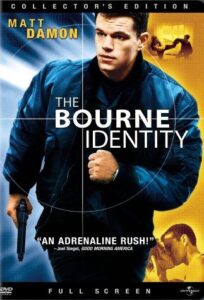
Yes, who knows. Jason Bourne is across it, and he was supposed to be flight from reality.
Mouse Whisper
If that human crowd have not had enough pandemic, Splendour in the Mud in Byron Bay may just be a catalyst for another, especially as it is not an uncommon event as exemplified in this British report:
Unusual transmissions of gastrointestinal diseases have also occurred during large scale open air festivals. An outbreak of Escherichia coli was reported during the Glastonbury music festival in England and was linked to mud contaminated by infected cattle. Heavy rain had turned the site into a quagmire, and attendees had high levels of contaminated mud on their hands and faces.
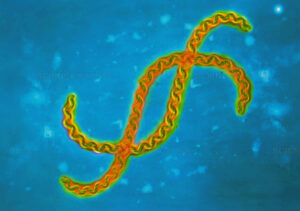
Also, those coming back from Splendour in the Mud last weekend should become acquainted with the one word “leptospira”. These nasty bacteria, the bane of sewage workers, are associated with my dirty cousin rats – in their urine which they sprinkle over sugar cane and banana plantations and which is washed away when the rains come and into the mud that forms around these bacteria.
Welcome to the disease world of the unprotected youth, acquiring a disease to remember where splendour is in the eye of the beholder as they cavort to the sounds of those masters of the music world. So, as you raise your glass with the muddy hand, do I hear you cry “Here’s Mud in Your Eye”?
No, that is a toast from another era well before Woodstock, in fact it’s biblical.
